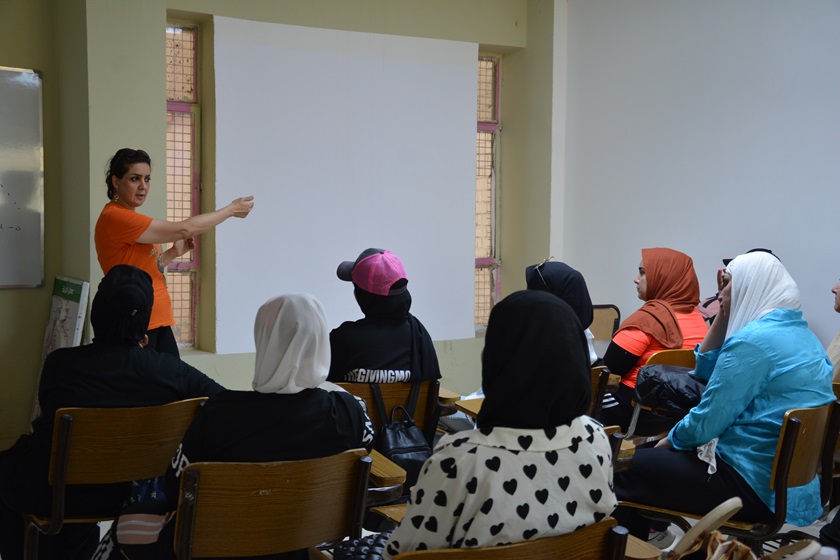The Rehabilitation, Employment and Follow-up Unit at the College of Physical Education and Sports Sciences for Girls, University of Baghdad, held a rehabilitation workshop entitled (Goalball for the Blind), in which the lecturer in the Team Sports Branch, Dr. Saja Khaled Jassim, delivered it.
Dr. Saja explained the concept of goalball (the bell) for the blind as a group football game designed for the blind and visually impaired. It is played according to rules and regulations and has positive effects on its practitioners because it increases their physical fitness. The team consists of three main players and three reserve players, and each player has the right in three substitutions, the game is governed by (11) referees for each match, and the match is played on the floor of a closed court, and the ball must be a bell ball.
She showed the method of playing based on passing the ball with a bell on the ground between the two teams by hand, and the timekeeper issues an alert (i.e. the referee who holds the clock), with a whistle or a sound machine 5 minutes before the match.
She added that among the most important playing tools for the players are the ball, the clothing of the goalball players (the bell), knee, elbow and hip pads, floor tape and string. The duration of the match is 24 minutes, and is divided into two halves of 12 minutes each, with a three-minute break in between,m. The basics fouls of goalball for the blind.
She emphasized the most important skills and characteristics in goalball for the blind, including the offensive skills, which are divided into the offensive readiness stance, passing, and shooting, such as shooting from stability, movement, rotation, and sitting, and the defensive skills, which are divided into the defensive readiness stance, and defense positions such as side lying, long sitting, and barrier lying. Defensive depth, movement in the defense zone, defensive follow-up, and blocking the penalty kick.
She also mentioned how athletes in goalball are classified according to the degree of their visual impairment from a medical standpoint, in competitions organized by the International Blind Sports Federation (I.B.S.A) into three categories: the first category is B1. In this category, athletes are unable to perceive light in either eye. The second category, B2, is that athletes are able to recognize the shape of the hand to a visual acuity of 2/60, or a visual field of less than 5 degrees. The third category, B3, is that athletes have a visual acuity higher than 2/60, to a visual acuity of 6/60, or a visual field. More than 5 degrees and less than 20 degrees.
This workshop represents one of the sustainable development goals represented by the fourth goal: quality education.
